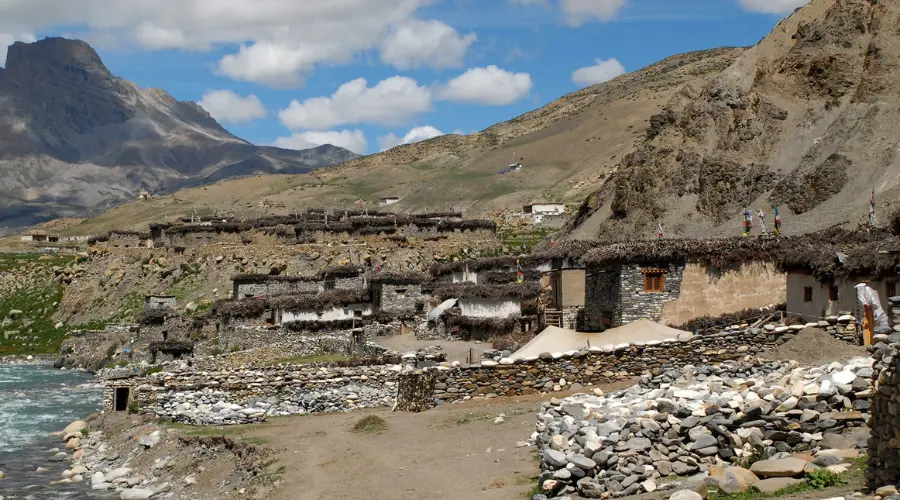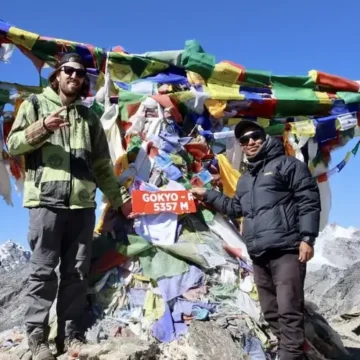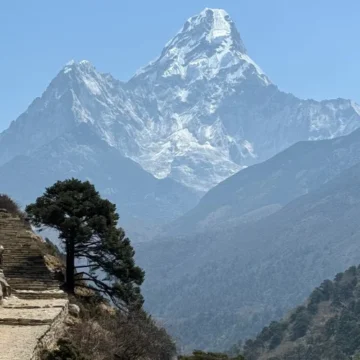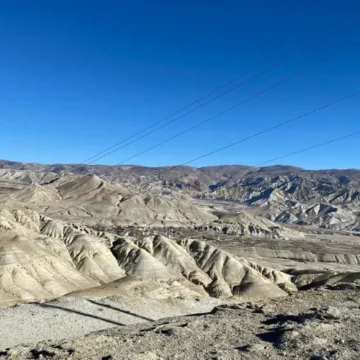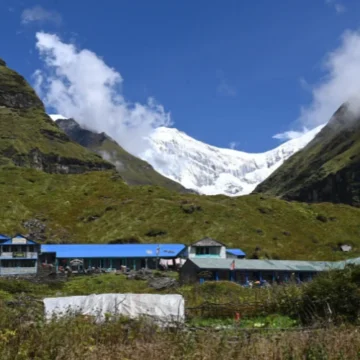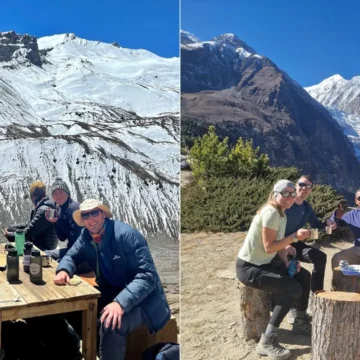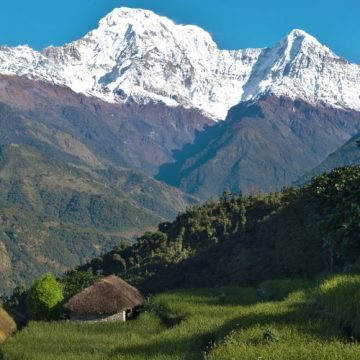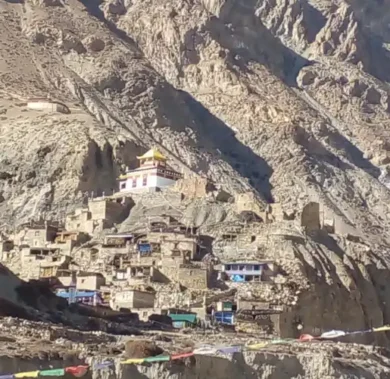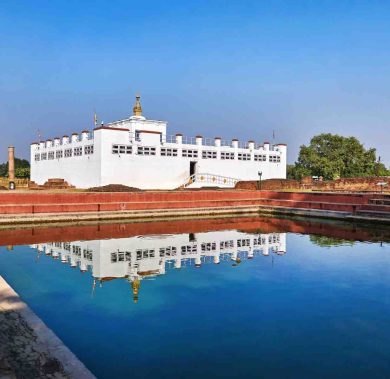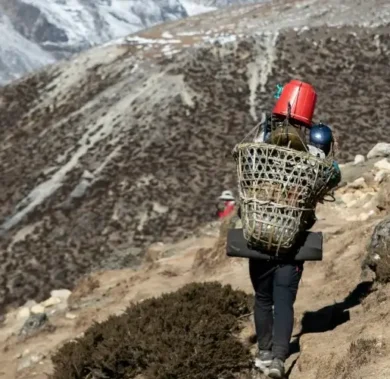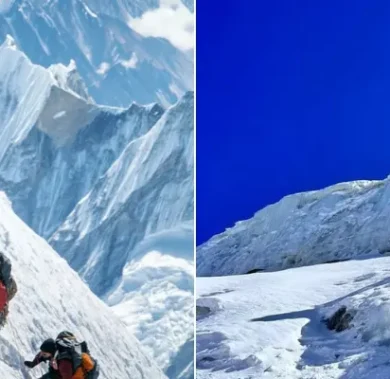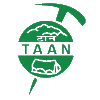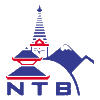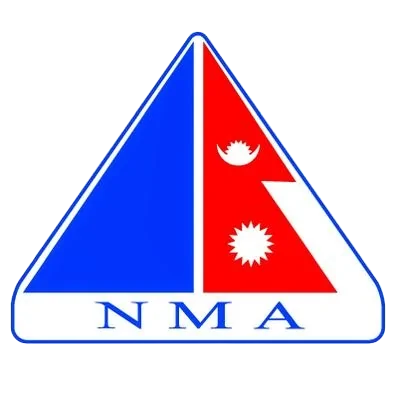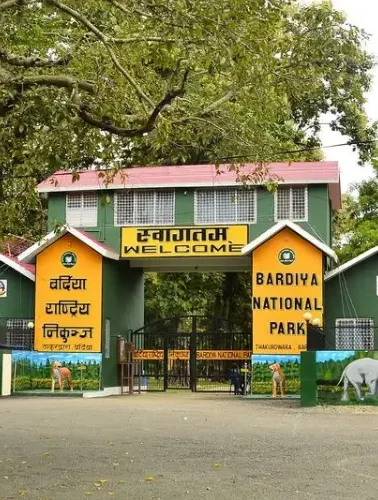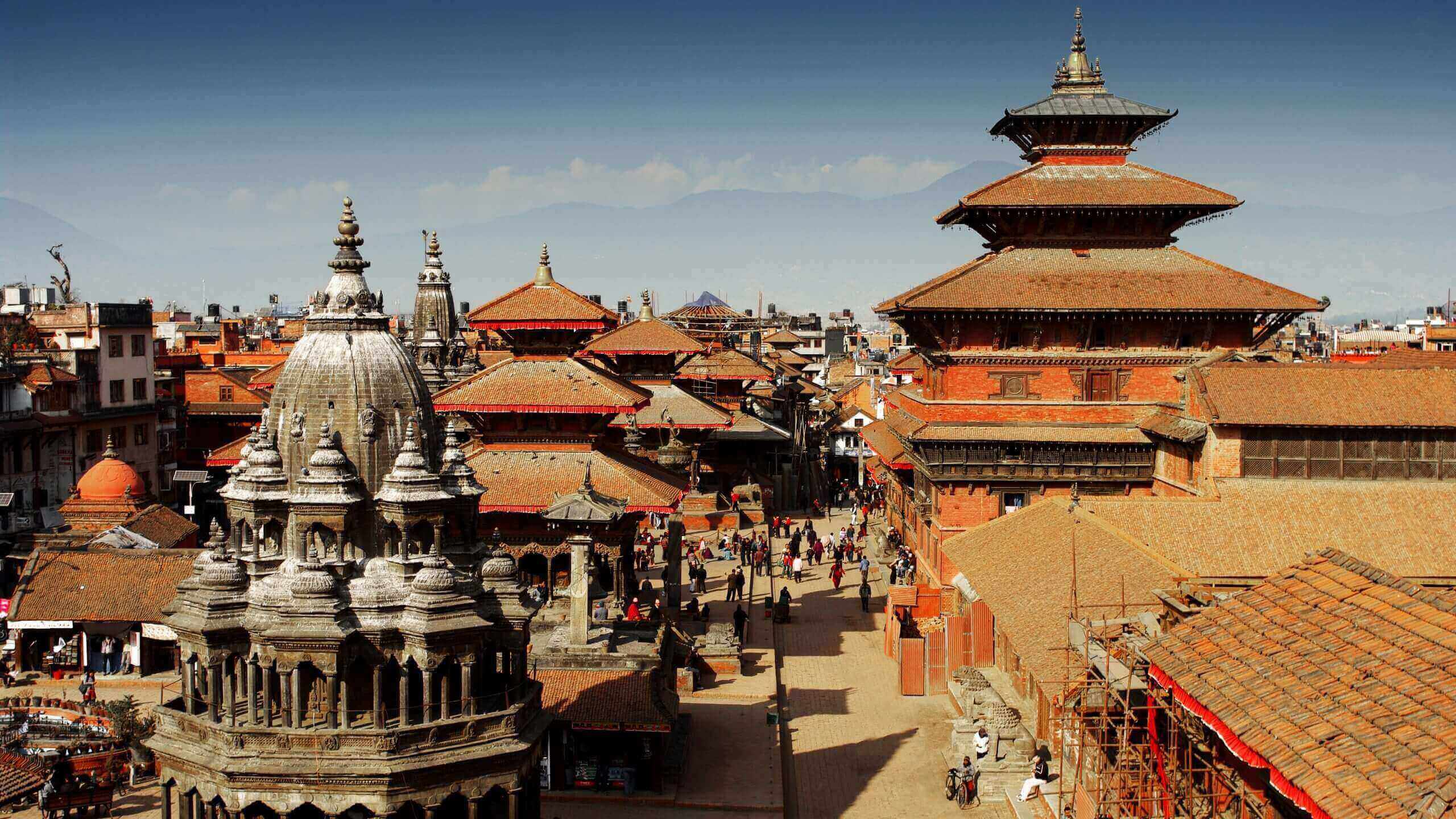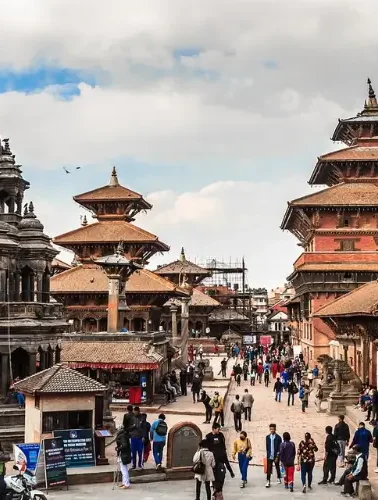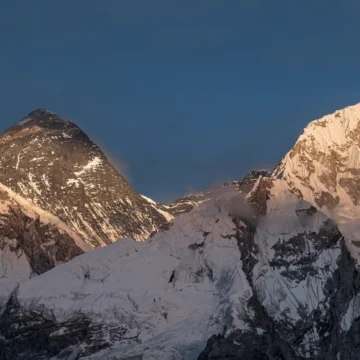
Nar Phu Valley Trek Accommodation and Food
Table of Contents
The Nar Phu Valley Trek, a lesser-known valley in the Annapurna region, is one of the most beautiful treks in the Himalayas. It is an off-the-beaten-path journey that takes trekkers through the remote, untouched Himalayan landscapes, ancient Tibetan villages, and high mountain passes. Due to its isolation, Nar Phu Valley trek accommodation and food are relatively simple, but they offer a unique and immersive taste of traditional mountain life.
Trekkers can expect basic yet cozy teahouses with basic facilities and hearty local meals that provide the energy needed to traverse rugged adventures. You will enjoy every second during meals in the warm dining room and even when having healthful food.
Let’s discuss a detailed understanding of Nar Phu Valley Trek accommodation and food.
Accommodation on Nar Phu Valley Trek
The accommodation during the Nar Phu Valley trek is quite basic. However, though they might not be as luxurious, they are quite comfortable enough, especially after Koto. Moreover, accommodation in cities like Kathmandu and Pokhara, little established villages like Koto and Nawal, and teahouses/lodges are satisfactory enough.
Teahouses and Lodges
Trek are small, family-run lodges that provide trekkers with a simple but welcoming place to rest. The lodges are an example of the traditional lifestyle of the Himalayan people and are an integral part of the trekking experience.
While more developed at lower elevations, teahouses at higher elevations are extremely basic, offering a rustic but authentic stay. Other teahouses have a community area where the trekkers sit around a fireplace, sharing experiences over a steaming cup of tea.
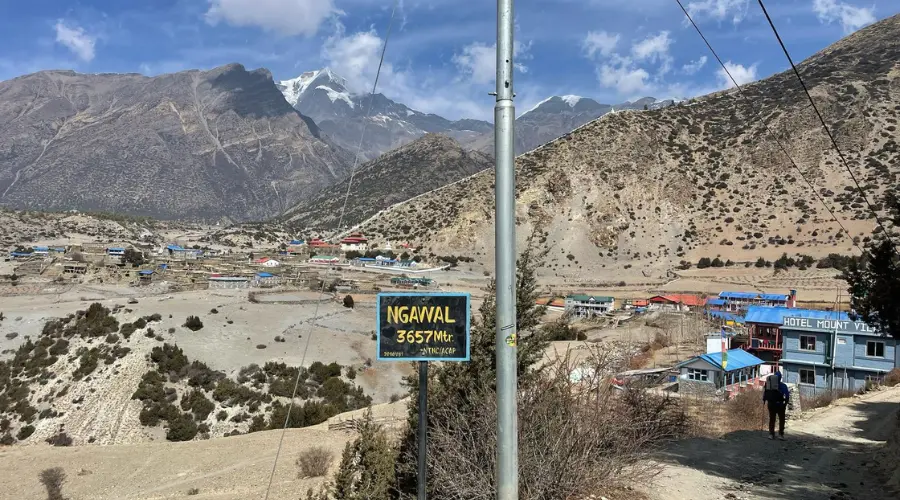
Features of the Accommodation
The accommodation during the Nar Phu Valley trek is quite basic. However, though they might not be as luxurious, they are quite comfortable enough, especially after Koto. Moreover, accommodation in cities like Kathmandu and Pokhara, little established villages like Koto and Nawal, and teahouses/lodges are satisfactory enough.
Beds
The rooms in the teahouses typically have twins and are shared. They usually have a mattress, a pillow, and warm blankets. Nevertheless, the temperature is quite low because of the cold climate, particularly in higher elevations. So, we advise you to carry a good sleeping bag for extra warmth. The rooms are small, with wooden beds and wooden or stone walls, providing limited insulation.
Heating
Heating tends to be limited to the communal dining room, where there is a yak-dung or wood stove. Rooms receive no heating, so thermal clothing layers and a quality sleeping bag are essential in order to stay warm at night.
Bathrooms and Hot Showers
Lower-altitude teahouses may have private bathrooms, but shared squat toilets are normal as you ascend. Some teahouses offer basic Western-style toilets, but they are rare.
Hot showers may be available at an additional cost, often heated by solar panels. At higher altitudes, showers become less common due to limited water supply.
Electricity and Charging
Electricity is available in most teahouses through solar power, but charging devices like phones and cameras usually costs extra. Carrying a power bank with a good backup or solar charger is highly recommended.
Wi-Fi/ Internet
Some teahouses provide Wi-Fi, but the bandwidth is slow and unreliable due to weather, location, and number of connectivity. Expect to pay extra for Wi-Fi access, and be prepared for areas with no connectivity at all.
Quality of Accommodation by Elevation
The accommodation quality on the Nar Phu Valley Trek varies significantly with altitude, reflecting the remoteness of the location. As the trekkers ascend to higher altitudes, leaving lower villages behind, the level of the facilities acts opposite. But the experiences are raw and rewarding.
Lower Elevation
At lower elevations, such as in Koto or Meta, teahouses are relatively more comfortable. Rooms are basic but neat and clean, with shared bathrooms and occasional access to hot showers (for an extra fee). Electricity is available, though charging devices may come at a small cost. Wi-Fi, if available, is slow and unreliable.
Higher Elevation
The accommodation becomes simpler as you ascend to higher altitudes, particularly in Nar and Phu villages. Teahouses here are less comfortable with fewer amenities. Generally, rooms at higher elevations are cold and do not have a heating system.
Further, the bathrooms are usually shared, and hot showers are race; a bucket hot shower is an option. However, we do not recommend taking a hot shower at higher elevations for health and altitude sickness concerns.
Likewise, electricity can be scarce, and Wi-Fi connection is usually not available.
Food on Nar Phu Valley Trek
The food on the Nar Phu Valley Trek is simple and specially designed to keep you energized during the whole journey. Despite a simple but hearty local meal served with warm hospitality, it lets you forget all the stress.
Local Meals
The most common staple meal on the trek is Dal Bhat (rice with black lentil soup and vegetables), which provides sufficient energy throughout the day. Other common options include noodle soup, fried rice, and Tibetan bread. Meals are generally cooked with locally available ingredients, which means they are fresh but limited in variety.
Western-style Meals Option in Nar Phu Valley Trek
Although the meals in the Nar Phu Valley are mostly basic, local Nepali cuisines, you might still be able to find some simple Western-style meals. Around lower altitude villages like Koto, Meta and Nawal serve foods like pasta, pancakes, fried rice, omelettes, and simple local-style pizza.
In contrast, in cities like Besisahar, Kathmandu and Pokhara, trekkers can enjoy Nepali, Indian, Thai, Chinese, Continental, etc., all types of Western-style meals.

Snacks
Trekkers are advised to carry some snacks for the road to keep them energized when preparing for the Nar Phu Valley Trek. Especially around high mountain passes, there are no teahouses, and sometimes the food might not suit your palate. So, in such cases, you might want to eat something that you crave.
We suggest packing energy bars, nuts, chocolate, and dried fruits for the route. Also, you can ask to pack some boiled potatoes and eggs, yak cheese, instant noodles, fried Tibetan bread, etc., at the teahouse where you stay for long walking days.
Drinks
There isn’t much variety of drinks on the Nar Phu Valley Trek route. Milk tea, made from yak milk, is the most common drink you can find in the teahouses.
Likewise, black tea, ginger tea, and butter are also easily available. Some of the teahouses might also serve hot lemon (with or without honey) and instant coffee.
Additionally, you can order sea buckthorn juice (a local beverage made from natural herbs that are rich in Vitamins) at the teahouse to keep you energized. Furthermore, you might want to try Chhang (rice beer) as a celebration when returning.
Dietary Considerations
If you have any dietary constraints, do inform your guide and teahouse owners in advance. In case you want vegetarian, vegan food, gluten-free, or have an allergy to anything, it is better to inform in advance. If not, you might have to adjust to the foods served or opt for other supplementary snacks.
Meal Timing
There are basically 3 meals on the Nar Phu Valley Trek accommodation and food. They are normally served at a set time, according to your trek itinerary.
Breakfast Time
It is served early in the morning, normally around 7 am. Make sure you have a good portion of breakfast, as it helps you kickstart your day.
Normally, egg items, Tibetan bread, porridge, toast, tea/coffee, roti, chapati, Tsampa, etc. are served for breakfast.
Lunch Time
By 3-4 hours of the trek, you must be exhausted. So, stopping for lunch helps you rejuvenate yourself and give rest to your legs.
Usually, we stop between 11 am and 12 pm for lunch in one of the teahouses from where you can enjoy the view and food. Dal Bhat, noodles, Mo: Mo, chowmin, fried rice, etc., are the most common choices for lunch.
Dinner Time
Now that you have completed the day successfully, you deserve a congratulatory dinner. Dinner is served between 6-8 pm. Make sure you order food as soon as you arrive at the teahouse to get your food on time.
Dal Bhat, again, is the most common and best food option we can suggest. Additionally, vegetable soup, thukpa, noodle soup, pasta, etc., are also available in the teahouses.
Food Hygiene and Water Safety
Eating healthy and drinking clean water is the most important part of the trek. If not, you might fall sick and not be able to complete the trek.
We do not suggest you eat meat or raw salads as you trek to higher villages. They do not have a proper refrigeration system, so it might be stale and difficult to digest.
Likewise, do not overeat. Diarrhea is a common sickness trekkers suffer from, which can further add to the Nar Phu Trek difficulty. So, consult with your guide and eat healthy.
Further, water is the most common food trekkers eat. Therefore, if possible, drink boiled water at all times. We do not recommend buying bottled water, as it is quite expensive, especially at higher elevations.
The best option for water is to fill it from the taps in teahouses and purify it with a water purification tablet at least 20 minutes before drinking it.
Overall Experience on Lodge and Dining in Nar Phu Trek
The lodges along the Nar Phu Trek provide a simple but heartwarming experience where trekkers can immerse themselves in the local culture while enjoying the hospitality of the Himalayan people.
Though accommodation is basic, the communal atmosphere in teahouses and the nourishing meals help make the journey enjoyable. Trekkers should be prepared for harsh conditions, along with the unique adventure in one of Nepal’s most remote trekking destinations.
Nonetheless, we can assure you that the Nar Phu Valley Trek accommodation and food are good enough for your comfort and convenience.
Want to know more?
Speak to an Expert





Sandip Dhungana
Nepal 🇳🇵
Whatsapp: +977-9823636377

